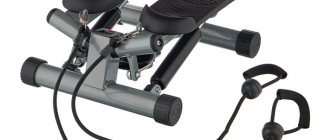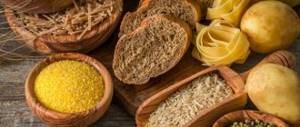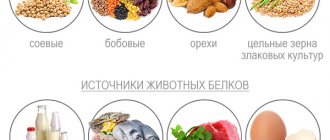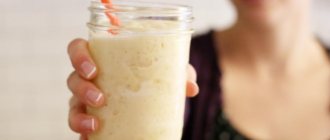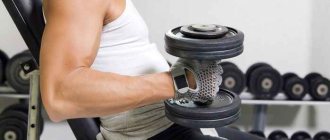Meat and animal protein
All meat that exists in nature does not contain carbohydrates. The problem is how and in what form to serve the dish. Carbohydrates are found in most sauces, seasonings, sausages, sausages, bacon and other processed deli meats. You will have to read the ingredients of the product carefully before purchasing it. As for eggs, they contain a microscopic carbohydrate content - approximately 6 grams per egg. Next, we will provide you with a list that will diversify your protein diet:
- beef;
- veal;
- meat organs (liver, kidneys, tongue, brains);
- pork;
- lamb meat;
- chicken;
- turkey;
- fish (salmon, trout, halibut);
- duck;
- goose;
- shellfish (crabs, shrimp, lobsters);
- oysters, mussels;
- game meat (venison, elk);
- exotic varieties (emu meat);
- dairy products.
People who prefer a low-carb diet cannot imagine their diet without milk and dairy products. Keep in mind that full-fat cheeses and cream contain negligible amounts of carbohydrates. And only butter is completely devoid of the main source of energy.
“They put meat in jellied meat”: what do Russians snack on, according to the Chinese
Dmitry Iskhakov explained why he is against his 3-year-old daughter leaving the country
Daughter Osin told how she lives with her young husband. Agnia grew up to be a beauty
Types of low-carbohydrate diet
This type of food is divided into several types. They differ in the ratio of proteins, fats, carbohydrates, as well as the mode of their consumption. and can be as effective as wrapping with cling film at home. One of the most popular types of carbohydrate-free diet is the keto diet. It differs from the usual low-carb diet in the predominance of fat in the diet. Fats are consumed of both plant and animal origin.
The remaining types of this diet differ only in the periods of time with the minimum carbohydrate content recommended for effective fat burning.
Constant
In this diet, carbohydrates are limited on an ongoing basis. Their content in the diet usually does not exceed 20 grams per day. The menu consists mainly of proteins and fats. Vegetables of any kind are present in small quantities. In the first week you may feel weak and dizzy. When the body goes into ketosis, your health improves and you feel a surge of strength.
Power
This variety is more suitable for athletes who engage in strength training. In this nutritional system, before going to the gym, you consume a small amount of carbohydrates so that you have enough energy. In this case, it is necessary to exercise intensively in order to expend all the energy received from carbohydrates. If the load is not enough, the weight will not go away.
It is believed that a low-carbohydrate diet is one of the most effective for losing weight, getting rid of excess weight and maintaining a stable body weight.
Circular - the most effective
This type involves cyclical nutrition without carbohydrates (or with a minimum amount of them) for six days, and on the seventh day the diet includes a large amount of carbohydrates in the form of cereals, durum pasta, and all types of vegetables. In the first half of the seventh day it is allowed to eat fruits.
This carbohydrate loading is necessary to develop special enzymes and to increase metabolism. On the seventh day, the body stores glycogen in the liver and muscles. The carb-loading circuit allows you to stock up on energy for the next week and feel good.
Drinking regimen during the keto diet
During a low-carbohydrate diet, be sure to drink enough clean water, 8-10 glasses per day. This is necessary for good peristalsis. A low-carbohydrate diet implies a reduction in fiber-rich foods (cereals, fruits, some vegetables) in the diet, so stool may be irregular. A sufficient amount of liquid solves this problem.
Water also helps remove waste products during ketosis. An excess of ketone bodies with insufficient drinking can lead to poor health.
How long can you stay on a low-carbohydrate diet?
If there are no contraindications and you are in good health and well-being, you can stick to a carbohydrate-free diet for as long as you like. Gradually, you can switch to a low-carbohydrate diet, with a carbohydrate content of 50-80 grams in the diet.
It is important that a diet without carbohydrates usually does not require counting calories, which means that those losing weight do not need to fight the feeling of hunger.
Seasonings and oils
Remember that most popular condiments and sauces contain carbohydrates. To improve the taste and extend shelf life, manufacturers add vinegar, sugar, mustard, and emulsifiers to mayonnaise. Other sauces may contain high fructose corn syrup, herbs, sugar, honey and other ingredients. If you are not sure about the naturalness of the product, carefully study the label on the package. Below we present a list of seasonings and oils that are completely devoid of carbohydrates:
- salt;
- vegetable, nut and fruit oils (avocado, grape seed, canola, olive oil);
- fish oil, lard;
- some brands of margarine.
Low Carb Diet Recipes
Meals with a minimum amount of carbohydrates in the diet are nourishing and varied. For a low-carbohydrate diet for weight loss, the menu for each day is made up of a list of allowed foods.
Chicken soup with meatballs
Step-by-step recipe for the first course:
- Rinse the chicken under running water and cook the broth.
- Strain the finished broth and add salt.
- Add green beans, Brussels sprouts, chopped zucchini.
- Add the egg to the minced meat and roll into small balls.
- Place the meatballs in the broth and cook for 15 minutes along with the vegetables.
Baked mackerel
Recipe for cooking fish in stages:
- Rinse the fish in running water and rub with salt and pepper to taste.
- Melt two tablespoons of butter.
- Add chopped garlic to the oil.
- Place a sprig of dill and lemon slices inside the fish.
- Drizzle butter and garlic on top.
- Bake in the oven for 20 minutes at 200 degrees.
A no-carb diet means avoiding flour products that contain gluten.
Pizza without dough
Step-by-step preparation of pizza without flour:
- Wash the zucchini and cut into slices.
- Place on a greased baking sheet.
- Grease with mayonnaise and ketchup.
- Place chopped tomatoes, mushrooms, bell peppers, salami, brisket, and olives on top.
- Sprinkle with grated cheese.
- Bake in the oven for 15 minutes at 200 degrees.
Seafood salad
Steps for preparing a hearty salad:
- Scald the squid, peel and cut into strips.
- Boil for five minutes in salted water.
- Peel the shrimp and place in a salad bowl with the squid.
- Chop cilantro, dill and add to seafood.
- Squeeze a couple of cloves of garlic.
- Cut boiled eggs into cubes.
- Sprinkle with lemon juice, add soy sauce and mayonnaise, stir.
No carb vegetable salad
Any permitted vegetables can be used in a salad using this system.
Example of vegetable salad:
- Wash the tomato, cucumber, bell pepper and cut into cubes.
- Chop Chinese cabbage.
- Mix the ingredients, season with olive oil.
- Add salt to taste.
Sugar substitutes
The new generation liquid sweetener sucralose does not contain carbohydrates at all. Other sweeteners contain traces of polysaccharides. Do not get carried away with these products, because a large amount of them affects insulin. Avoid sweeteners that come in granular form. Here's what you should pay attention to:
Yoga you need to do in the morning so that your body and body say “thank you”
Fashion designer and architect join forces to create a vibrant clothing collection
What to do on the first of every month so that your dreams finally come true
- stevia;
- aspartame;
- sucralose;
- saccharin.
Contraindications
Before starting any diet aimed at combating excess weight, you must consult a doctor. This appeal is especially necessary for those people who have health problems. Pregnant women and nursing mothers are strictly prohibited from using a carbohydrate-free diet.
In addition, contraindications apply to the following cases:
- Cardiac and vascular pathologies.
- Diseases of the kidneys and bladder.
- Diseases associated with improper functioning of the digestive organs, liver and pancreas.
- Recent surgeries.
People who experience an allergic reaction to protein should also not resort to this method of losing weight.
What are carbohydrates?
Carbohydrates are a group of sugar-containing macronutrients that are broken down into separate categories. Simple carbohydrates include candies, sweets, baked goods, and fruits. The complex category includes rice, corn, flour, whole grains, and legumes. Fiber is also a carbohydrate.
Malysheva advised that during the pandemic it is imperative to lose weight
“I don’t want actresses.” Dobronravov told why their dynasty could be interrupted
very delicate tangerine dessert with cherry jelly and creamy layer: recipe
Types of diet and dietary features
The menu for every day with a low-carbohydrate diet consists of protein dishes, permitted vegetables and fats in any form (vegetable and animal). You can make desserts using allowed dairy products using gelatin or bake them (without flour). To strictly adhere to the regime, it is better to print out a table of permitted products and carry it with you. In this diet, there is no division into what exactly to eat for breakfast, lunch and dinner. Allowed foods can be eaten at any time of the day.
Restricting carbohydrates in the diet usually leads to an unnoticeable reduction in caloric intake by 20-25%.
For drying the body
In order to reduce the fat layer and remove excess water from the body, they resort to the so-called drying. In this diet, it is better to exclude partially permitted foods from categories that consume 300 grams per day and 1 tablespoon for cooking. The emphasis is on meat and fish dishes. Vegetable and animal fats are required in the diet. When fats predominate in the menu, the process of ketosis intensifies, which means that excess weight disappears faster. Be sure to drink at least 1.5 liters of clean water per day.
Circular no-carb diet
Otherwise, this variety is called cyclic. The circuit diet can be applied in two ways. In the first, carbohydrates are reduced to a minimum for 6 days, and on 7 days a carbohydrate load is arranged. Then the cycle repeats.
In the second method, they eat with a minimum content of carbohydrates in the diet for 5 days, and on days 6 and 7 they eat high-carbohydrate dishes.
During pregnancy
During the period of bearing a child, it is recommended to adhere to a balanced diet to ensure the supply of all necessary vitamins and minerals. In cases where a pregnant woman is overweight, you can stick to a high-protein and low-carbohydrate diet.
A carbohydrate-free system helps during pregnancy not to accumulate excess fluid, and therefore to avoid edema. This regimen is suitable up to 30 weeks. For women in later stages, the load on the kidneys and liver may increase.
Turbo diet without carbohydrates
To enhance the process of breaking down fat deposits, you can use an accelerated course of nutrition by completely eliminating carbohydrates from the diet. This regime is followed for 7 days, then they switch to a low-carbohydrate diet. It is better to plan the menu for a week without carbohydrates in advance so that you do not have the desire to eat prohibited foods. In the turbo version, both vegetable and animal fats predominate.
In the absence of carbohydrate foods, calories come from protein and fat—and even on a keto diet, it's hard to eat too much of these.
Diet without fats and carbohydrates
The strictest carbohydrate-free diet is a diet without fats and carbohydrates. This option is suitable only for healthy people. Vegetables and fats are excluded from the menu. The diet consists exclusively of protein products. For this type, choose low-fat meats and fish, low-fat cottage cheese, and eggs. This type is followed for no more than 7 days, during which weight loss noticeably accelerates.
Why do you need to limit your carbohydrate intake?
Low-carbohydrate diets, such as the Atkins diet, limit the amount of glucose consumed to control insulin in the blood. Most recommendations suggest limiting your carbohydrate intake to 50 grams per day. The strictest of them propose halving the specified norm. Keep in mind that one serving of white rice contains 151 grams of carbohydrates, and each slice of bread contains another 15 grams. By controlling body weight and insulin in the blood, you need to shift the emphasis in nutrition. The foods we've talked about will help you eat well while sharply limiting your carbohydrate intake.
What is a no-carb diet?
The name no-carbohydrate diet speaks for itself. Nutrition involves reducing carbohydrates in the diet to a minimum. It is not recommended to completely refuse in order to maintain good functioning of the gastrointestinal tract and ensure the supply of necessary vitamins and minerals.
The diet reduces not only fast, but also slow carbohydrates. Nutrition is based on protein foods, fats and vegetables. Vegetables are included in the diet for good digestive tract function and as sources of vitamins.
A low-carbohydrate diet is the avoidance of carbohydrate-containing foods in order to lose weight.
You can choose any culinary method of cooking: frying, stewing, boiling, baking. The calorie content of the diet and the number of meals are not limited.
Labeling secrets
Just because you buy a product labeled as 0 grams of carbohydrates does not mean the food is completely free of carbohydrates. In fact, under food packaging regulations, the manufacturer has the right to provide this information when the food contains less than one gram of carbohydrates. This means you shouldn’t buy all the boxes that promise you a healthy life. Stick to a diet based on organic, unprocessed foods. And treat any packaged goods with reserved interest.
General principles
To ensure quick and effective results, we carefully follow all aspects of this nutrition system:
- During the day, eat small meals 5-6 times. You will have to forget about intermediate snacks.
- The norms of drinking water per day are 2-2.5 liters. Drink water before meals and half an hour after, but not at the same time.
- Eat your last meal of the day before seven or eight o'clock in the evening. If you have an unbearable feeling of hunger in the evening, deceive your stomach with a glass of water, and then go to bed.
- Take vitamin and mineral supplements.
- Reduce the amount of carbohydrates in the menu gradually: from the usual norm of 150-200 g, approach the minimum value - 20-30 grams.
- Eliminate bread, sugar, coffee, foods containing starch (potatoes, beets, corn), high-GI fruits, and processed foods from your diet; food labeled as “diet” or low-fat,” alcohol is also unacceptable.
- Of vegetable fats, only a little nuts and olive or flaxseed oil are allowed.
- Frying food is allowed, but again only with olive or linseed oil.
- Don't forget about physical activity. If you can’t bear to run or swim in the morning, console yourself with the fact that thanks to physical exercise, your skin will not sag after losing weight, and your muscles will take on a beautiful shape.
How does a low carb diet work?
This is somewhat contrary to the laws of life, but it makes it possible to effectively lose weight. The body is accustomed to using carbohydrates as its main source of energy. Nutritionists suggest keeping glucose intake to a minimum, based on numerous scientific studies. Insulin is the key to weight loss, and here's why. This chemical can be called a storage hormone. It is responsible for converting the energy the body receives from food into fat. Excess weight deposited on the sides represents energy reserves.
In some ways, insulin acts like a prison guard and keeps fat cells locked inside. If you limit your carbohydrate intake, your body produces little insulin. Now the forces are unequal, and fat cells easily escape from “imprisonment.” This is the mechanism of a low-carb diet. However, there are some contraindications, so nutritionists do not advise switching to new nutritional principles without receiving the appropriate recommendation from specialists.
Found a violation? Report content
What happens in the body when you give up carbohydrates?
With a balanced diet, the body receives energy from carbohydrates, which it converts into glucose. Excess glucose is stored as glycogen in the liver and stored as fat mass. When there is a lack of carbohydrates, the body begins to break down fat reserves, turning them into ketone bodies. This mechanism helps the body survive in starvation conditions. When carbohydrates are deficient, ketones nourish the brain and act as energy for vital functions. This process is called ketosis.
Products
Every product contains carbohydrates. In some ingredients their quantity is minimal, in others – maximum. A list of such products has been compiled.
Allowed
Products that can be consumed on a protein diet:
- lean meat, poultry;
- eggs;
- Fish and seafood;
- vegetables;
- greenery;
- unsweetened fruits;
- dairy products with 0% fat content;
- olive oil.
Prohibited
The following products are strictly not allowed on the menu of a low-carbohydrate diet for weight loss:
- sugar;
- wheat;
- sausages;
- canned food;
- sunflower oil;
- carbonated drinks;
- ice cream;
- candies.
How to exit
An important stage of a low-carbohydrate diet is the exit from it. To prevent extra pounds, lost with great difficulty, from coming back, you should follow certain rules:
- Introduce carbohydrates gradually
- Drink up to two liters of clean water a day.
- Eat unsweetened fruits and vegetables.
- Avoid fried foods.
- Do not increase the portion.
- Stick to the diet.
- Include physical activity.
